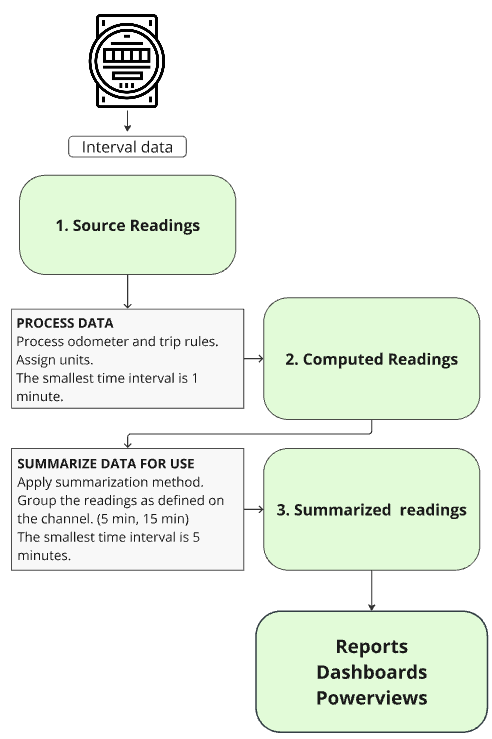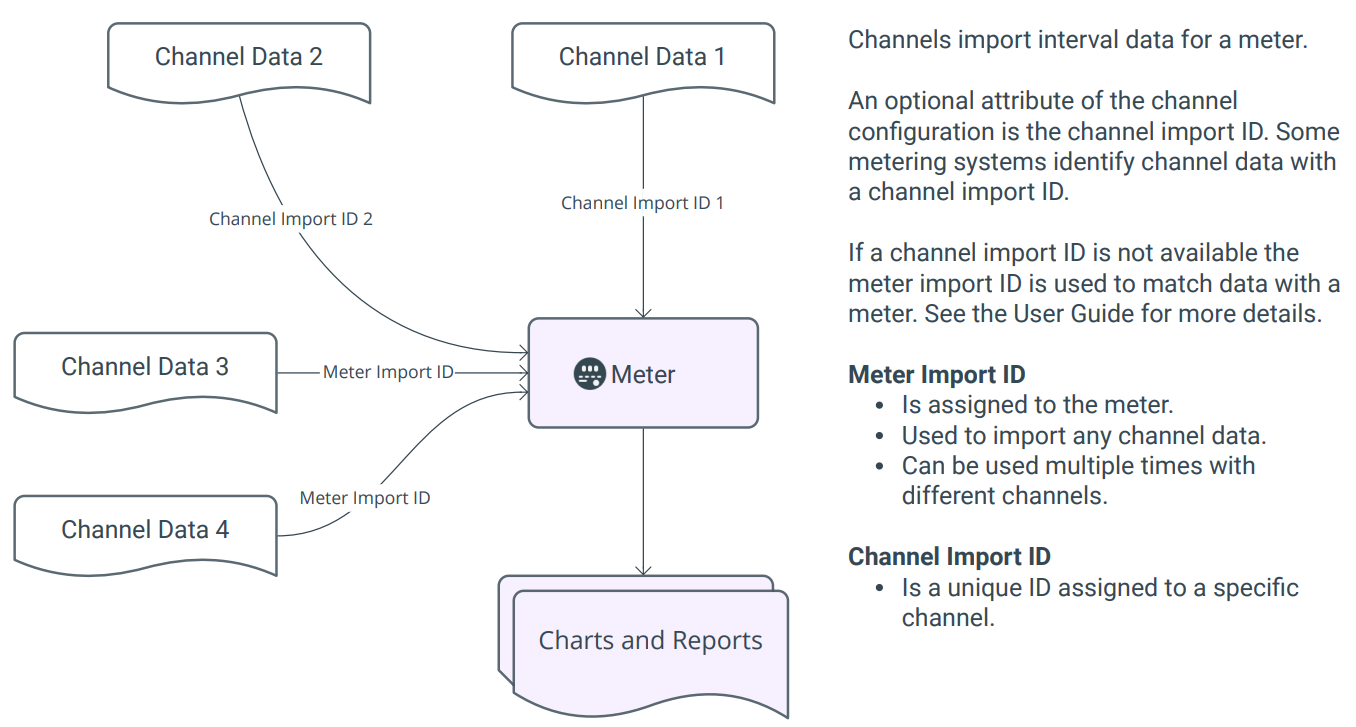Interval Data overview
The updated Interval Data module and Interval Data tabs
are only available with a Smart Analytics subscription.
For Legacy Smart Analytics (formerly Wattics) help go here.
Interval data provides a more granular view of use and demand.
There are three types of readings in EnergyCAP:
- Source Readings
Unprocessed by EnergyCAP. - Computed Readings
Computed readings have rules and units applied. These readings are not snapped to the clock. The smallest time interval is one minute. - Summarized Readings
The summarization method is applied to the computed readings in each time interval. The smallest time interval is 5 minutes.
Summarized readings are snapped to the clock. For example, readings are grouped as defined on the channel (5 minute, 15 minute, etc.) and are assigned to the time interval that was defined. For example, a 15-minute channel has readings at 8:15, 8:30, 8:45.
Summarized readings are used for reports, Powerviews, Trend Insights, and in dashboard widgets.

Interval data can uncover
- Operational inefficiencies
- Energy waste and savings opportunities
- Peak demand and cost management
- Security and scheduling issues

How to view interval data
- Interval Data tab of the meter or site
- Dashboards
What you can do with interval data
EnergyCAP makes it easy to collect, analyze, and monitor your interval data across facilities. You can:
- Connect and collect data from meters, submeters, files, or APIs
- Analyze and backfill missing or incomplete data
- Monitor and alert on abnormal readings or data gaps
Review channels and make updates
Update setup spreadsheets let you review and make updates to channel information.
Interval Data module
The Interval Data module helps you manage and monitor your interval meter readings. It includes these screens:
- Interval Data Meter Status
View interval data meters grouped by their last reading from the primary value channel. Helps to quickly spot potential issues with meters and readings. - Reading Imports
See a list of all imported reading files and their results. Includes links to:
- The imported file
- The readings
- The error file (if applicable) - Reading Import Profiles
View all the reading import profiles in your system.
From this screen, you can:
- Edit existing profiles
- Use a profile to import readings
- Create a new import profile